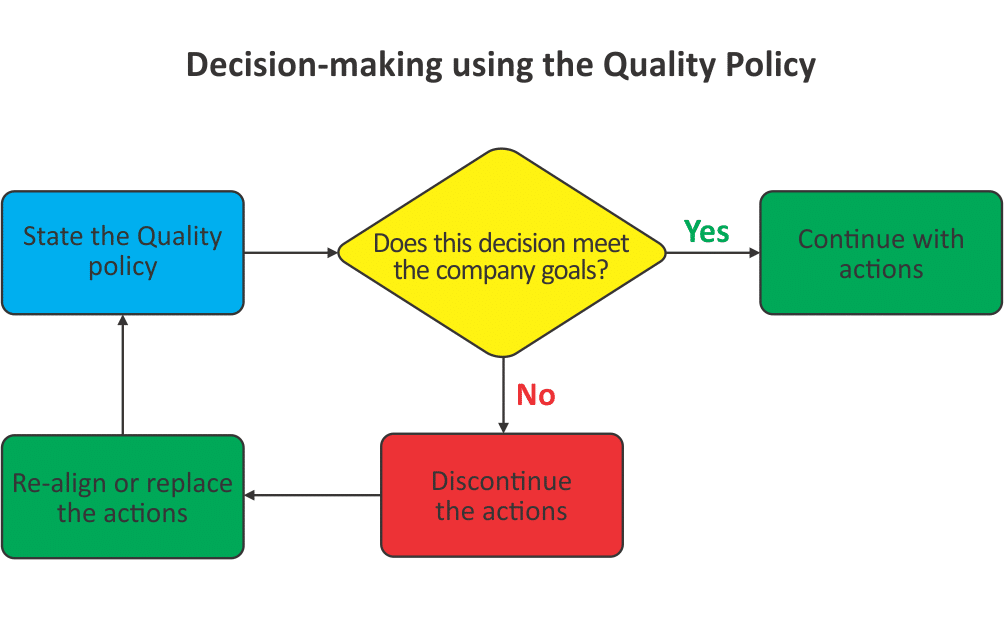
How to Write a Good Quality Policy
One of the first things to do when implementing a Quality Management System using the requirements of the ISO 9001 standard is to write a Quality Policy for your company. In some ways, this sounds like a simple process; yet, in other ways, making sure the policy is effective in helping your company succeed can seem to be a daunting task. You may be wondering: What are the important things to think about when creating our company Quality Policy?
The Quality Policy should be the Goal of the Organization
If the policy is a reflection of the goals of the organization it can be used as a filter for business decisions. If your policy is to “consistently deliver superior widgets while continually improving our processes and productivity,” then a manager can look at how they are applying resources and ask, “Will making this resource allocation decision work toward meeting our commitments to superior widgets and improvement?” In cases where the answer is no, the decision should be to not continue with the project and find another that better leads to the goals of the company.

Start with Customer Requirements
The key to starting any Quality Management System is to make sure you understand the requirements of your customers. If you are to successfully drive your QMS toward improving customer satisfaction, it is critical to make sure you understand all the requirements you need to meet to attain this. These requirements may come directly from customer specification, through industry standards, or even through legal requirements regarding your products or services. You may need to meet tight customer on-time delivery requirements, have industry standard levels of cleanliness in food preparation, or even legal requirements on what materials can be used in your processes (thus limiting them). Ensuring that you have all these necessary inputs will help to make sure your Quality Policy focuses on the important elements to attain customer satisfaction.
Collect Inputs of Internal Parties
The Quality Policy is intended to be the main focus for the Quality Management System, and is intended to be usable by all employees as a focus for their job. If this is the case, it is important to gather input from all areas of the company to ensure that the Quality Policy is applicable to all those areas. In order to do this, it is important to get the input of people in the areas who will need to apply the policy. If people can’t see how the Quality Policy relates to their job, then it becomes just a slogan on the wall. But if they can see how it is relevant to their job, such as meeting on-time deliveries to customers whom the employees can have direct influence on, it can be a filter for any business decisions.
Include Required Information of ISO 9001
The standard does impose some requirements on the Quality Policy that are important to note. The Quality Policy needs to show the commitment of the company to comply with requirements and to improve the effectiveness of the QMS. Since a commitment to Customer Satisfaction and Improvement are key elements in the decision to implement a Quality Management System, it makes sense that the guiding policy of the system should include this commitment. This can be done by stating this as a fact, such as “improving our commitment to deliver to customers on time,” but it needs to be backed up with plans to implement these improvements. An additional requirement, although it should go without saying, is that the Quality Policy is to be appropriate to the purpose or the organization. If you make automotive parts, the policy should speak about this and not some other service that could be provided.
Write and Communicate the Quality Policy
With all of this information in mind, you need to draft a policy that can guide the organization and provide direction to create quality objectives. (For more details on quality objectives, see How to Write Good Quality Objectives) It is said that a good Quality Policy is simple, concise, and easily remembered when under pressure. It is important that all employees not just know the policy, but understand what it means and how their job supports meeting the Quality Policy.

